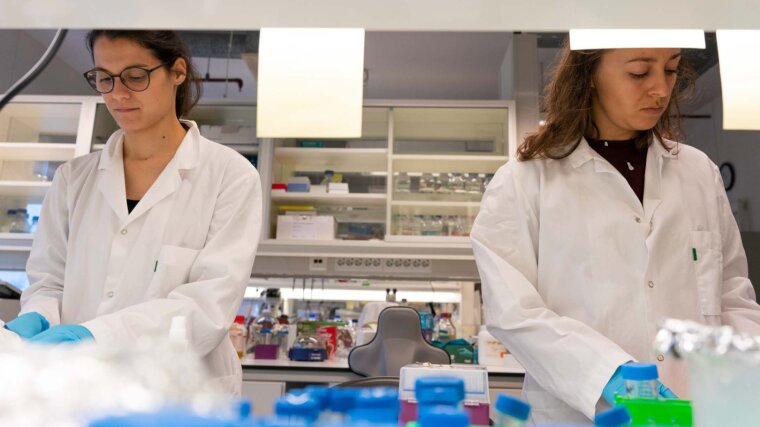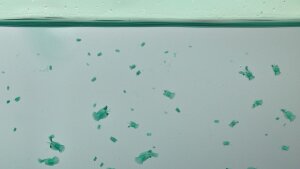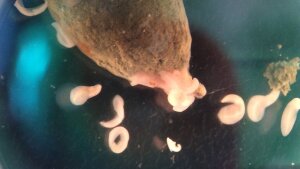
- Knowledge Transfer and Innovation
- Research
Published: | By: Vivien Busse
Just as Alice from Wonderland discovers new things in her second adventure “Through the Looking Glass”, international scientists want to give an insight into the world behind research results and publications. The new online exhibition "Life: Through the Looking Glass" shows what their work looks like in research laboratories, what they work on and what questions they ask themselves in the process. In a total of eight stories, those interested can experience the research journeys of the young scientists who are working on the evolution of animals. Two scientists from the team of Prof. Dr Andreas Hejnol from the Institute of Zoology and Evolutionary Research at the Friedrich Schiller University Jena will also be taking part. The exhibition can be viewed online at www.life-throughthelookingglass.comExternal link from 6 pm on 24 May 2022.
Convolutriloba stuck to the glass of the aquarium after feeding. The orange dot in the middle of the body is a "belly full of food"
Image: Francesca Pinton / Universität JenaWhat influence are objects of science subject to?
The eight insights come from researchers of the European research network "EvoCELL", which studies the evolution of cell types and tissues in different invertebrates and vertebrates. One of the scientists is Francesca Pinton from the University of Jena. She is researching Convolutriloba, a tiny animal species with a maximum size of one centimetre, which she keeps in aquaria in the laboratory.
After opening the sea cucumber gut, you can see mearas moving around its contents.
Image: Petra Kovacikova / Universität JenaHer colleague Petra Kovacikova works with Meara, another marine worm that lives in the digestive tract of sea cucumbers. She has to catch her research subjects in nature. In their story "Control freaks" in the online exhibition, the two scientists, who moved from the University of Bergen to the University of Jena together with Prof. Hejnol, explore the question of how environmental influences affect living creatures. Do the years in captivity in the aquarium influence the development of the organisms living there and thus the data they interpret as biologists? On the other hand, changes in the natural environment can also influence free-living organisms in their development. "Contributing to the online exhibition meant explaining what we do and why our research is important. In doing so, we can explain the scientific process and illustrate it with pictures and animations. This makes science visible and tangible for everyone," says PhD student Francesca Pinton about her involvement. Her colleague Petra Kovacikova adds: "The network has brought together many researchers from the field and enabled an intensive exchange – also on our passion for sharing science with the public."
Many facets of cell evolution
In the other stories of the exhibition, the researchers question, among other things, how altered genetic information affects living beings ("Living without fear") and which common genes are found in the nervous system of both humans and animals ("The superior human?"). They are researching how well some animals can regenerate whole body parts ("No battle scars") and what plankton is all about ("Secret lives of plankton").
European support for young researchers
The digital exhibition is full of pictures, animations and videos. It is presented in English, but can be translated into other languages with the help of translation programmes. The exhibition is curated by two scientists from the Museum für Naturkunde in Berlin, who are also part of the "EvoCELL" network. In addition to the University of Jena and the Berlin museum, ten other institutions are part of the "Research Training Network", which was funded as a Marie Skłodowska-Curie Action by the EU Horizon 2020 funding scheme. Since January 2018, the project and thus the training of (post-)doctoral researchers has been supported with 3.8 million euros for four years.

